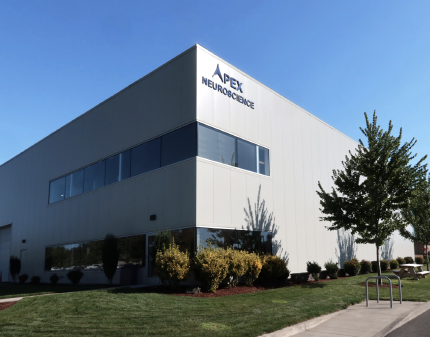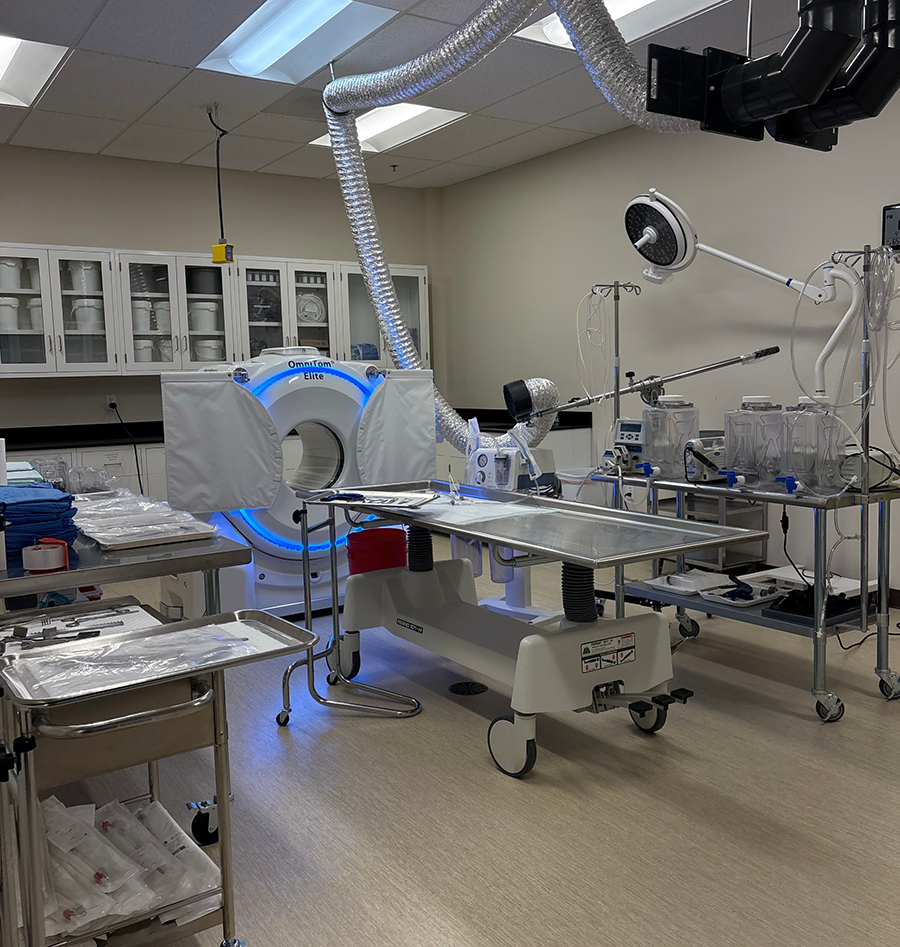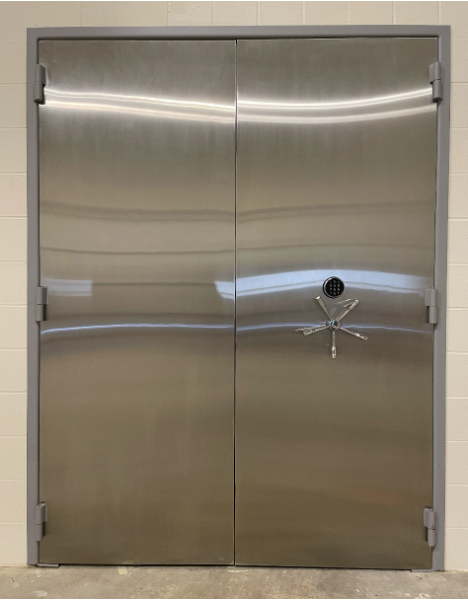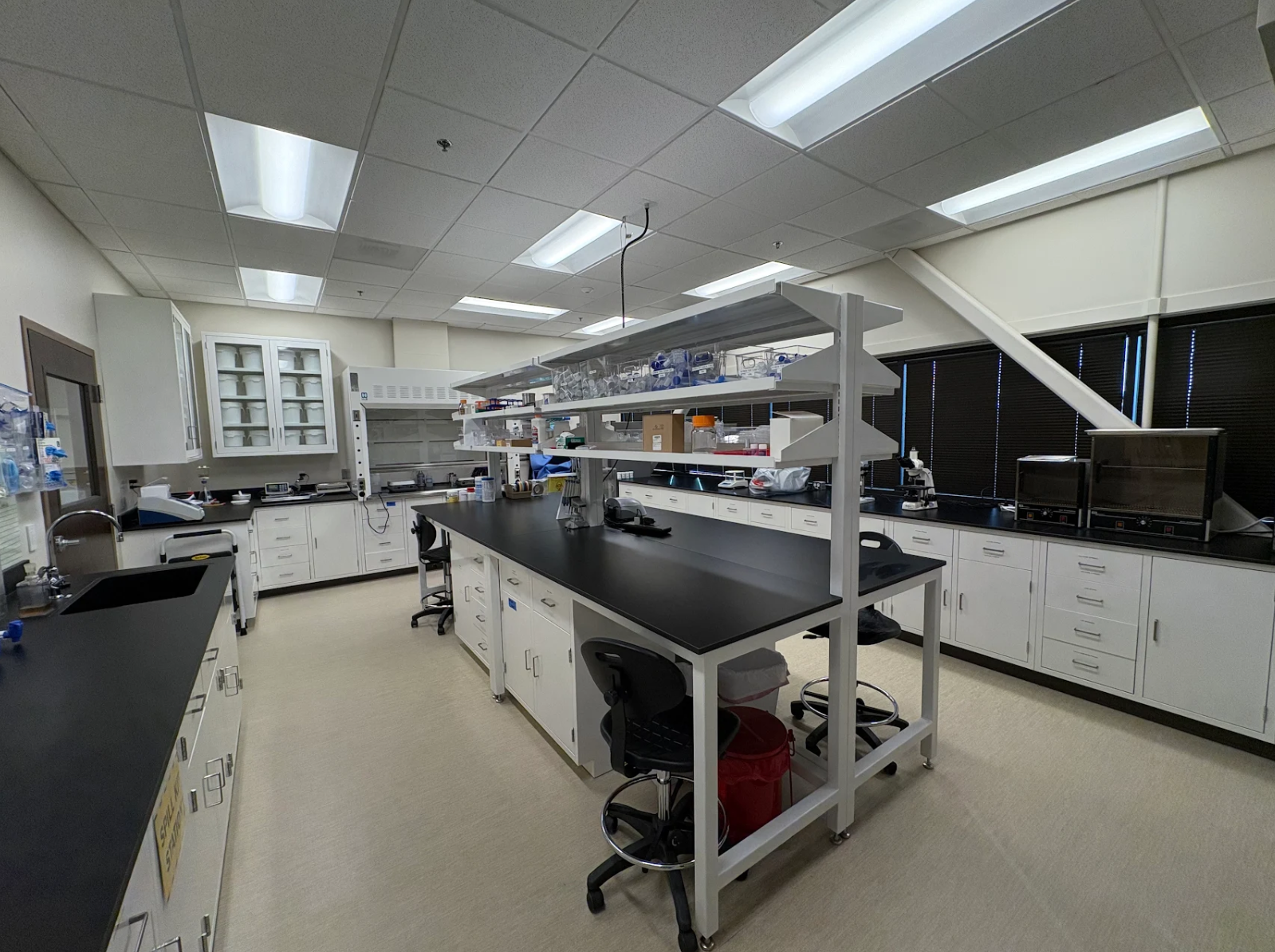
The outside of our facility, which includes a sign for Apex Neuroscience.
Our building is a purpose-built, 20,000 square foot facility in Salem, Oregon, completed in 2025. The building also displays a sign for Apex Neuroscience, our partner non-profit research entity. The facility includes a substantial amount of office and laboratory space, with significant room for expansion as our research programs grow. Below, we describe some of the relatively unique aspects of our facility.

Our operating room.
Our operating room is equipped with a CT scanner, surgical table, surgical lighting, suction equipment, ventilation systems for fume extraction, and all necessary equipment for brain preservation procedures. The CT scanner is an OmniTom® Elite, a 16-slice scanner that is the kind of point-of-care scanner used in a NeuroICU. Having CT imaging capabilities directly in the procedure room enables immediate perfusion quality assessment and protocol optimization. The CT scanner also allows us to confirm the complete penetration of preservative chemicals prior to proceeding to sub-zero temperature storage.

The inside of our visitor room.
Adjacent to the operating room is a dedicated space that can be used for End of Life Cycle options, such as Medical Aid In Dying (MAID). Oregon is currently one of only two states that permits MAID for non-residents. We believe individuals should have autonomy over their bodies, including the ability to choose the timing and circumstances that allow for optimal preservation quality, if they so desire. This integration of dedicated space for end-of-life-cycle care right next to our operating room enables people to exercise their bodily autonomy while maximizing their chances for potential future revival.

The inside of our mobile preservation vehicle.
Our facility includes a vehicle bay housing mobile preservation units designed for rapid on-site response. This capability allows us to provide high-quality preservation services to members within driving distance.

The secure door to the patient care vault.
Patient brains preserved for long-term care are stored in a reinforced concrete vault with a metal access door. This provides secure, climate-controlled storage of our patients, which is done completely separate from research specimens. The -20°C freezer room is 600+ square feet and as a result, we already have the capacity for the long-term care of thousands more patients in the future.

The inside of our laboratory space.
The facility includes extensive laboratory space with fume hoods, workstations, and equipment for tissue processing and analysis, including a vibratome and osmometer. This space supports our ongoing research program, which focuses on optimizing preservation protocols and evaluating ultrastructural quality. We have evaluated the preservation quality in hundreds of brain specimens and have an ambitious research program focused on improving the quality of real-world care we can provide to patients.

Liquid nitrogen dewars.
We have provided consistent care to patients preserved in liquid nitrogen since 2014. Several patients who were preserved before our current aldehyde-based protocol was adopted remain in liquid nitrogen storage, and we maintain the infrastructure and expertise to continue their care indefinitely. We also offer cryopreservation as a last resort option when our standard aldehyde preservation cannot be performed, which is typically when a body has been straight frozen before this could be prevented. Although the evidence indicates that aldehyde fixation provides superior structural preservation quality, we recognize that pure cryopreservation may be the only available option in some circumstances.